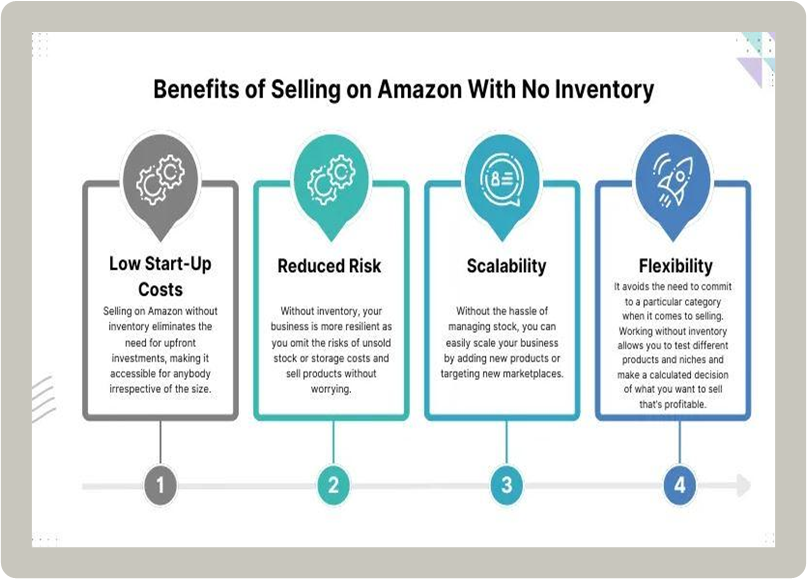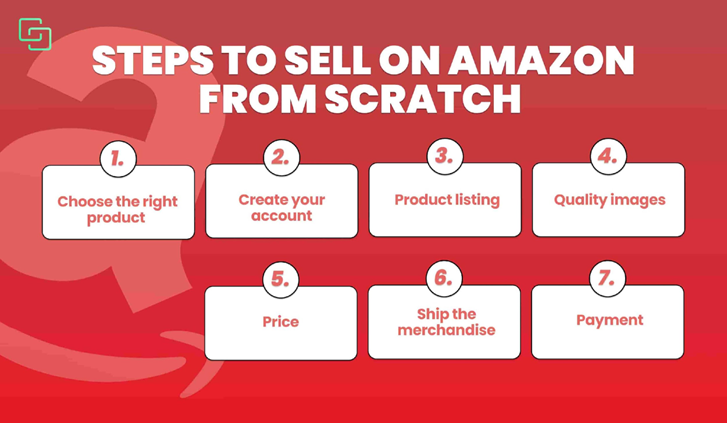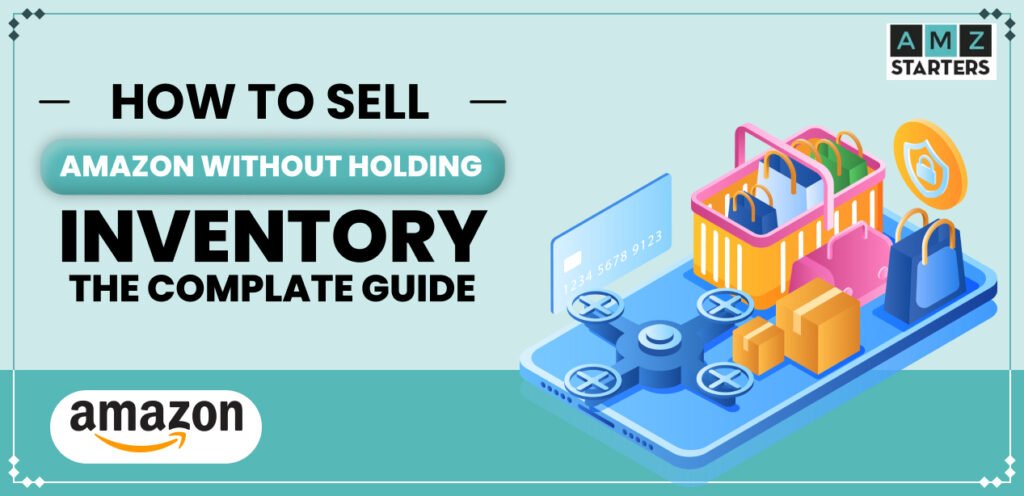Introduction
In the world of e-commerce, Amazon continues to be a game-changer. But not everyone wants to invest in warehouses or bulk inventory. That’s where a smarter model comes in — selling without ever holding stock. Whether you’re a first-time entrepreneur or an existing business owner looking for a leaner system, the idea of running an Amazon store without inventory can sound too good to be true. But it’s not. Thanks to new methods and tools, it’s now possible to run a profitable Amazon business without the headaches of traditional inventory management. This guide is designed to walk you through how to sell on Amazon without inventory, covering the methods, benefits, and key tools that make it all work smoothly. We’ll also touch on automation strategies that are helping thousands of sellers save time and grow faster. Ready to learn how you can do it too?
The Role of an Amazon Automation
Look, juggling suppliers, product listings, and customer questions all at once can get really stressful—no joke. That’s where Amazon automation come in handy. These folks basically take the wheel for you, handling everything from finding products, setting up your store, managing inventory (even if it’s all virtual), marketing, and dealing with customers. It’s like having a whole team on your side.
This route is perfect if you’re an investor or someone who’s busy with other stuff but still wants to tap into e-commerce without sweating the details. Just a heads up though—make sure you pick a trustworthy agency with solid reviews. After all, your store’s reputation is on the line.
Understanding the No-Inventory Model
So, selling on Amazon without actually holding any stock means you’re not storing products yourself. When someone orders from your store, someone else handles the packing and shipping—either a supplier or Amazon itself. There are a few common ways folks do this: dropshipping, FBA, and print-on-demand.
Each one’s got its good and bad sides. Like dropshipping—you list the products, but the supplier sends them directly to the buyer. With FBA, you send your stuff to Amazon’s warehouses, and they handle shipping and all that. The best part? You don’t have to pay for a storage place or deal with shipping yourself. Plus, it’s awesome if you want to test out products without risking too much cash upfront.
Advantages of Selling Without Inventory

There are many reasons why sellers choose this route. For starters, it significantly lowers the risk and financial investment compared to traditional retail models. You don’t have to buy large amounts of stock upfront or worry about leftover inventory that doesn’t sell. It also offers flexibility: you can test new products, scale up quickly, and work from anywhere in the world. Plus, with Amazon handling the customer experience or suppliers managing fulfillment, you can focus on growing your business instead of getting stuck in the weeds.
How to Sell on Amazon Without Inventory
Running an Amazon store today? You don’t really need a warehouse full of stuff anymore. It’s kinda wild how things have changed. Now, with all these cool eCommerce tricks, you can sell without ever holding inventory. If you’re trying to dodge big upfront costs or just don’t wanna risk a lot, this is perfect.
Whether you’re someone who’s always on the go — maybe working from a coffee shop or even the beach — or just doing this as a side hustle, you can run your business pretty much from anywhere. The best part? Amazon or other suppliers do all the heavy lifting like storing and shipping your products.
And honestly, if you set things up right, you don’t have to babysit your listings or customer messages all day either. Lots of that stuff can be automated. You’ve got options: dropshipping, print-on-demand, or teaming up with FBA folks — take your pick. Every way has its quirks, sure, but what they all have in common is freedom. Freedom from stock piles, space problems, and all that old-school business stress. It’s lean, it’s flexible, and there’s tons of chances if you know where to look.
Dropshipping
The Most Popular Method
Thinking of selling on Amazon but not keen on buying loads of stock upfront? Dropshipping might just be the route for you. It’s simple: you list items on your store, and when someone places an order, your supplier ships it straight to the customer. You don’t touch the product at all. You’re more like the person connecting both ends—seller and buyer.
That’s a big reason why beginners go for it. You don’t need a warehouse, and you don’t need to pack boxes late at night. But—and it’s a big but—your whole setup relies on the supplier. If they mess up a delivery or send something that’s not up to the mark, your reputation’s on the line. One unhappy customer review can really throw a wrench in your progress.
Using Amazon FBA with Third-Party Suppliers
Another smart method is to use Fulfillment by Amazon (FBA), where Amazon stores and ships your products. You can still avoid holding inventory by working with suppliers who send products directly to Amazon’s warehouses. This gives you the best of both worlds: you don’t handle the inventory, and your customers get the benefit of Amazon’s trusted shipping services. FBA also makes your products eligible for Prime, which boosts visibility and conversion rates. While FBA involves fees, the increased trust and reach often make it worth the cost. Many sellers pair this model with wholesale purchasing or private labeling to stand out from the competition.
Print-on-Demand Products
Print-on-demand is ideal for those who want to sell custom products like t-shirts, mugs, or notebooks. You only create the item after someone places an order. Services like Printful or Printify can be integrated with Amazon, allowing you to upload designs and automatically fulfill orders without inventory. It’s a great way to monetize creativity and test niche markets with very little risk. This model also works well for social media influencers or bloggers who want to launch their own product line without major investments.
Major Steps How Sell on Amazon

1. Choose the Right Product
Selecting the right product is the foundation. It ensures demand, profitability, and long-term success on Amazon’s competitive platform.
2. Create Your Account
Start by setting up your Amazon Seller Central account to unlock access to millions of potential customers worldwide.
3. Product Listing
Accurate product listings with optimized titles and descriptions improve visibility and increase the chances of making consistent sales.
4. Quality Images
High-quality product images build trust, enhance customer experience, and significantly boost conversion rates on your Amazon store.
5. Price
Setting the right price involves market research and strategy. Competitive pricing directly impacts visibility and customer purchase decisions.
6. Ship the Merchandise
Timely and reliable shipping is crucial for customer satisfaction, helping maintain positive reviews and a solid seller rating.
7. Payment
Amazon handles transactions securely, ensuring sellers receive prompt, accurate payouts once orders are processed and confirmed.
3 Key Methods to Sell on Amazon Without Holding Inventory
1. Fulfillment by Amazon (FBA) with Wholesale Suppliers
Okay, so if dropshipping doesn’t feel right, or you want something a bit different, Fulfillment by Amazon—or FBA—is worth a look. Basically, you get your products from wholesale suppliers and send them off to Amazon’s warehouses. From there, Amazon does all the heavy lifting—storing your stuff, packing orders, shipping them out, even handling customer questions. You get the ease of not having to touch or ship anything yourself.
And here’s a cool thing: your products get the Prime badge. That little icon means fast, trusted shipping, and a lot of shoppers love it. It’s a huge plus when you want your listings to get seen more and sell faster. Now, sure, Amazon takes a cut for all this service — they charge fees — but a lot of sellers say it’s totally worth it for the extra boost and peace of mind.
Some sellers get creative too. They buy wholesale, slap their own brand on it—private labeling it—and suddenly their product looks unique. It’s a good way to stand out and get noticed in the crowded Amazon marketplace.
2. Print-on-Demand
Alright, so here’s the deal with print-on-demand. If you’re into making cool designs but don’t want to get stuck with tons of stock, this might be perfect for you. Basically, you just upload your art—think t-shirts, mugs, notebooks—to a site that hooks up with Amazon. Then, when someone buys something, bam! It gets printed and shipped right away. No inventory, no upfront costs, no fuss. What’s neat about this is that you can test out all kinds of ideas without risking a bunch of money. Since the product only gets made after someone orders it, you’re not stuck with leftovers or wasted cash. But, fair warning: because it’s made to order, sometimes the quality or delivery speed can be a bit unpredictable. So, you really want to find a print partner who’s reliable — that’s super important. This method’s a favorite for artists, influencers, and anyone who wants a flexible way to earn some extra cash without turning their home into a warehouse.
3. Use of an Amazon Automation Agency
Hire a professional agency to run your no-inventory Amazon store on autopilot, from sourcing to delivery.
An Amazon automation agency can fully manage your store using no-inventory models like dropshipping or wholesale FBA. These agencies handle everything — product research, supplier management, listings, customer service, and order fulfillment — so you can earn passively. It’s a hands-off solution ideal for busy professionals or investors. However, it requires a financial commitment and careful vetting to avoid scams. A reputable agency can build and scale your store, making the business almost fully passive over time.
Year-Wise Sales Growth of Amazon No-Inventory Sellers (Estimated)
Note: Figures are estimates based on industry trends and internal market surveys from leading eCommerce research firms.
Common Challenges and How to Overcome Them
Of course, this model isn’t without challenges. You might face longer shipping times, supplier errors, or listing issues on Amazon. The key to overcoming these hurdles is research and communication. Always vet your suppliers carefully, check product reviews, and monitor delivery timelines. Use tracking tools and automation software to stay on top of orders. It’s also wise to maintain excellent customer service to resolve complaints quickly and keep your ratings high. When done right, the benefits far outweigh the occasional hiccup.
Conclusion
As I asked on this web blog that selling on Amazon without keeping inventory is not just a passing trend—it’s a smart way to build a modern, low-risk eCommerce business. With methods like dropshipping, print-on-demand, and partnering with Amazon FBA, anyone looking to start selling has plenty of options. Whether you choose to handle things yourself or get help from an Amazon automation agency, this approach lets you launch your store quickly, grow wisely, and avoid unnecessary stress. Begin small, learn as you go, and watch your business grow steadily. Your path to success in online selling starts today.
